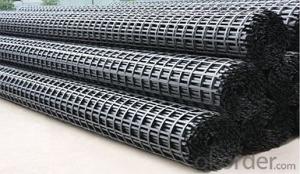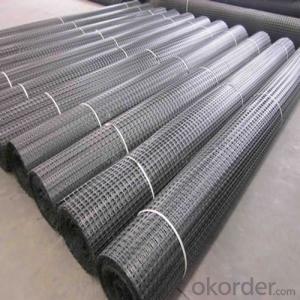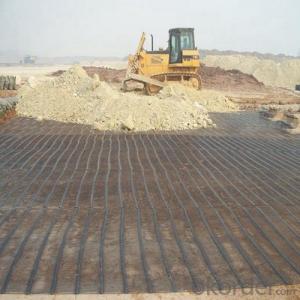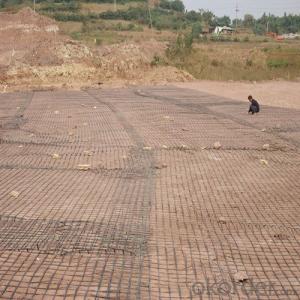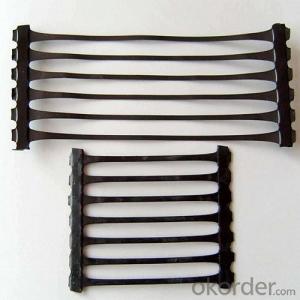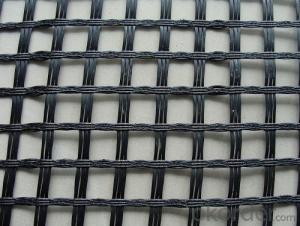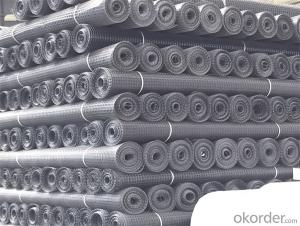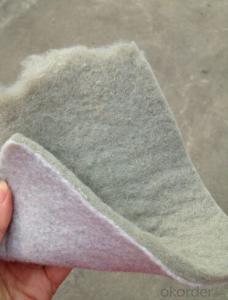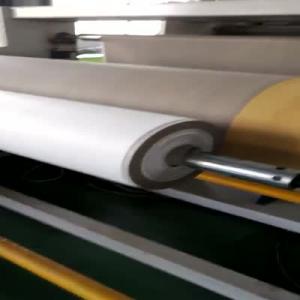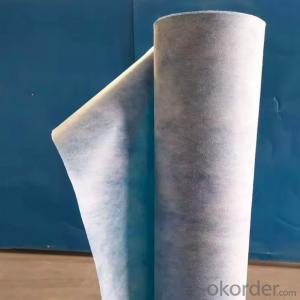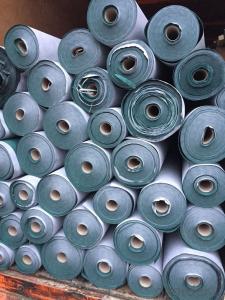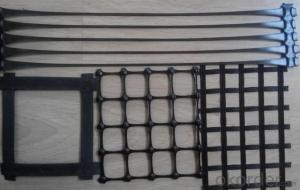Polypropylene Geogrid in Civil Engineering Construction
- Loading Port:
- China main port
- Payment Terms:
- TT OR LC
- Min Order Qty:
- 1000 m²
- Supply Capability:
- 10000000 m²/month
OKorder Service Pledge
OKorder Financial Service
You Might Also Like
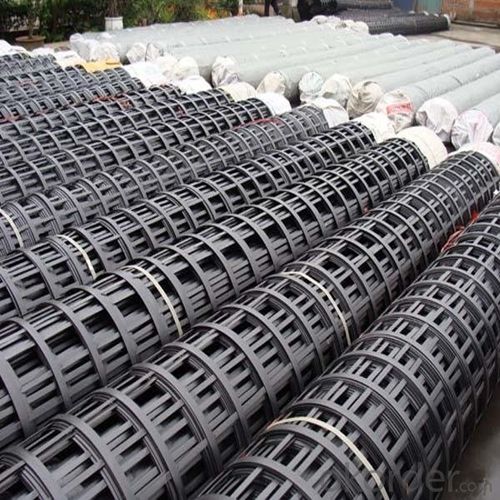
Introduction
Type:
Geogrids
Place of Origin:
Jiangsu, China (Mainland)
Brand Name:
Lonrace
Model Number:
geogrid
Material:
Polyester
Color:
White Black Gray Etc
feature:
Features:
1. High tensile strength in warp and across directions
2. Low Elongation
3. High flexibility
4. High and low temperature resistance
Slopes and subgrades with rails are a serious problem in railroad construction. Under high pressure the layers slide and deform consequently causing rail deformation, which requires closing railroad segments for a long time. Geogrid application allows carrying out comlex repair operations of the necessary road segment in shortest time (which is very essential in transportation)
Packaging & Shipping
Packing: PLASTIC FILM INSIDE, AND WOVEN BAG OUTSIDE
Shipping: About 15 days after receipt the deposit
geotextile fabric
permeability,filtration,easy for construction
ISO and CE certificate
Good quality and competitive price
Our Service
Quality assurance
1.On a regular basis or as per your request,we entrust national testing agencies to conduct quality inspections
2. Strictly in accordance with the ISO9001-2008 international quality system standard,we monitor and manage the whole process throughout production,quality testing,and measurement to ensure product quality
3. For quality-related construction delay or substandard construction(except for damage or losses due to customer’s responsibility or irresistible natural disasters),we have refunding,replacement,and repair services.We will respond to customers’ feedbacks on quality issues within 24 hours.
After-sales service
1.In order to provide customers with comprehensive technical support,we will provide technical and other related information upon request in a timely manner.
2.In required,we will appoint specialized technicians to the construction site to give technical trainings to construction people,and offer technical guidance throughout the whole construction process.
3.For damage due to shipment and delivery,after we receive the complaint,we will check the issure through provided pictures and videos.If our responsibility is confirmed,we wil offer free replacement.
4.When the construction is completed,as your request,our technical staff may participate in the final acceptance.
FAQ:
Q: What kind of payments does jenor support?
A: T/T, L/C, Cash are accepted.
Q: Do you charge for the samples?
A: Accordeing to our company policy, the samples are free, we only charge the freight fee. And we will return the freight fee during the next order.
Q: Can you produce according to customers' design?
A: Sure, we are professional manufacturer, OEM and ODM are both welcome.
Q: Do you have other products?
A: Yes, please check the pictures:
- Q:What are the specifications of the road geogrid
- Reference to the national standard, but the specifications are not necessarily the same as the national standard.
- Q:Can geogrids be used in reinforcement of coastal structures?
- Yes, geogrids can be used in the reinforcement of coastal structures. Geogrids are commonly used in coastal engineering to enhance the stability and strength of structures such as seawalls, revetments, and breakwaters. They provide additional reinforcement by improving soil cohesion and preventing erosion, thus increasing the durability and resilience of coastal structures against wave action and other environmental forces.
- Q:How do geogrids help in reducing the risk of soil erosion?
- Geogrids help in reducing the risk of soil erosion by providing reinforcement to the soil, increasing its stability and resistance to erosion. They are typically made of strong materials, such as plastic or polymer, and are installed beneath the topsoil or within the soil layers. Geogrids act as a barrier, distributing the load and reducing the pressure on the soil. This prevents soil particles from being washed away by water or wind, thus minimizing erosion and preserving the integrity of the landscape.
- Q:How to effectively control the quality of Geogrid in the process of construction
- 2 the surface of the bearing surface of the geosynthetics shall be leveled and compacted, and the hard and protruding surface shall be removed.
- Q:Are geogrids suitable for use in road widening projects?
- Yes, geogrids are suitable for use in road widening projects. Geogrids are commonly used in road construction and rehabilitation projects to improve the stability and strength of the road base. They provide reinforcement by distributing loads and reducing stress on the road surface, making them an ideal solution for road widening projects where additional support is required.
- Q:What are the differences between geogrids and geopipes?
- Geogrids and geopipes are both types of geosynthetics used in various construction and civil engineering applications, but they serve different purposes. Geogrids are typically made of high-strength polymer materials and are used to reinforce soil and provide stability to the ground. They are commonly used in road construction, retaining walls, slopes, and embankments to distribute loads and prevent soil erosion. Geogrids are characterized by their open-grid structure, which allows for soil interlocking and improved load distribution. On the other hand, geopipes are flexible conduits made of plastic materials and are primarily used for drainage purposes. They are designed to collect and transport excess water or other fluids from the soil or structures. Geopipes can be perforated or solid, depending on the specific drainage requirements of the project. They are commonly used in applications such as subsurface drainage, landfills, and stormwater management systems. In summary, while both geogrids and geopipes are geosynthetics used in construction, geogrids are used for soil reinforcement and stability, while geopipes are used for drainage purposes.
- Q:The geogrid is not less than 3 meters on each side, what does it mean?
- I think it is not a few geogrid lap width than the roadbed width of three meters, and then backfill roadbed soil after 60 or 80 cm and then the two sides of the geogrid back.Or the design requirements are back folding 30CM
- Q:What are the different installation methods for geogrids?
- There are several different installation methods for geogrids, including direct burial, mechanical anchoring, and adhesive bonding. Direct burial involves placing the geogrid in the soil and covering it with additional soil to secure it in place. Mechanical anchoring involves using pins or stakes to anchor the geogrid to the soil or other structures. Adhesive bonding involves using a specialized adhesive to bond the geogrid to a surface, such as a retaining wall. The choice of installation method depends on the specific project requirements and conditions.
- Q:Road overhaul of the original concrete pavement after washing asphalt paving, crack resistance is to use geotextile or geogrid
- Geotextiles are generally used,
- Q:How to distinguish the vertical and horizontal geogrid
- Generally do not distinguish between vertical and horizontal
1. Manufacturer Overview |
|
|---|---|
| Location | |
| Year Established | |
| Annual Output Value | |
| Main Markets | |
| Company Certifications | |
2. Manufacturer Certificates |
|
|---|---|
| a) Certification Name | |
| Range | |
| Reference | |
| Validity Period | |
3. Manufacturer Capability |
|
|---|---|
| a)Trade Capacity | |
| Nearest Port | |
| Export Percentage | |
| No.of Employees in Trade Department | |
| Language Spoken: | |
| b)Factory Information | |
| Factory Size: | |
| No. of Production Lines | |
| Contract Manufacturing | |
| Product Price Range | |
Send your message to us
Polypropylene Geogrid in Civil Engineering Construction
- Loading Port:
- China main port
- Payment Terms:
- TT OR LC
- Min Order Qty:
- 1000 m²
- Supply Capability:
- 10000000 m²/month
OKorder Service Pledge
OKorder Financial Service
Similar products
New products
Hot products
Hot Searches
Related keywords
